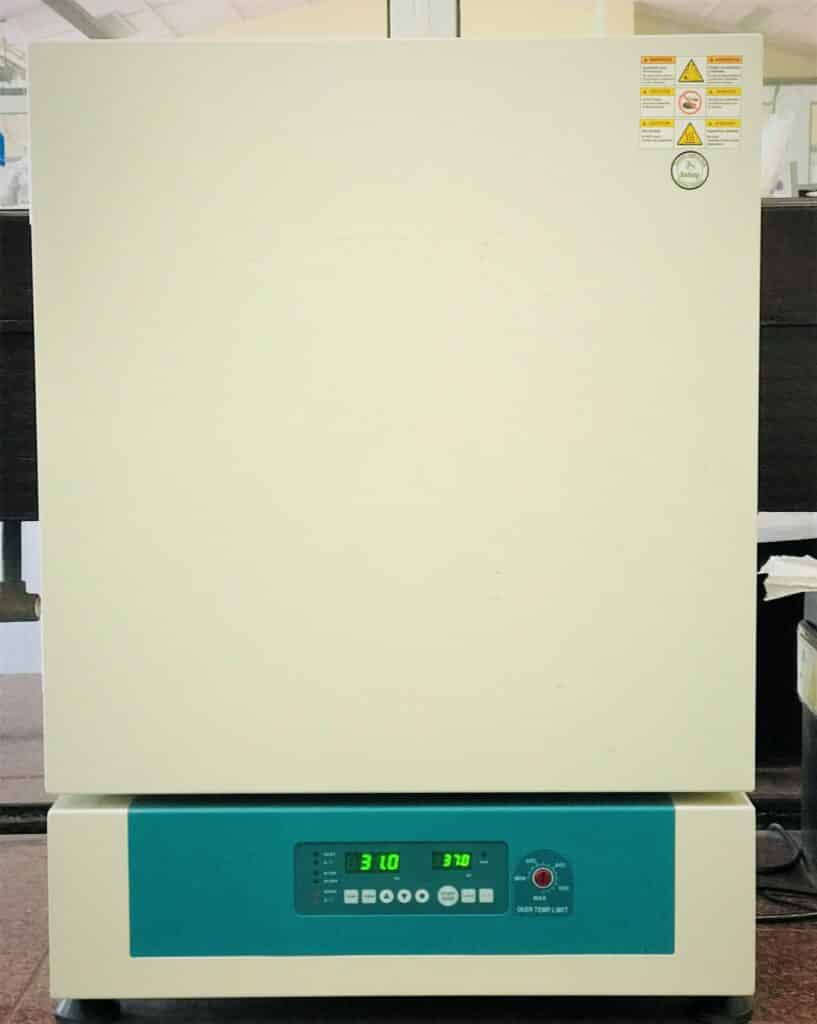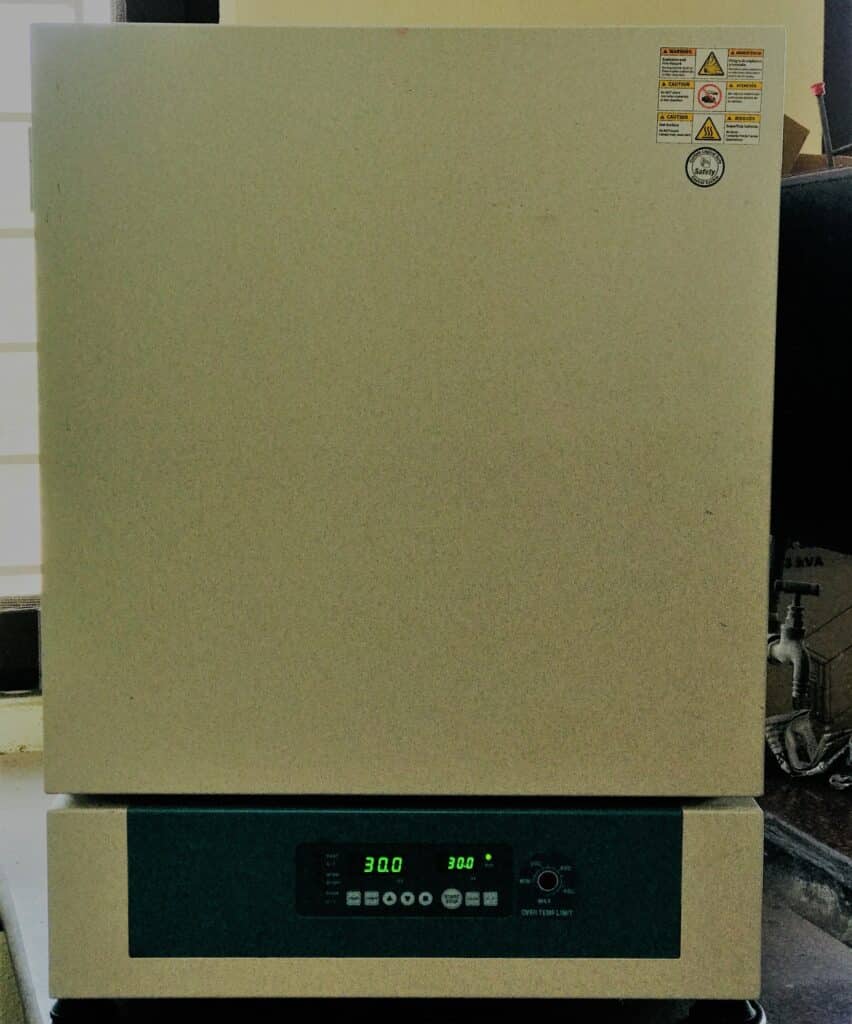Table of Contents
ToggleA lab incubator is defined as an insulated enclosure known as an incubator that allows environmental conditions to be adjusted to the best levels for growth, hatching, or reproduction. Laboratory incubators control variables including temperature, humidity, and CO2 to provide a sterile, controlled environment for reliable work with cell and tissue cultures. The development and preservation of bacterial cultures is done in microbiological incubators.

What is an incubator?
Lab incubators are crucial pieces of equipment that offer a temperature-controlled environment to assist the development of microbiological cultures. Additional uses include the detection of coliforms, incubation of eggs, heated storage, testing of food and drinks, and pharmaceutical testing.
Incubator in a microbiology Lab
To facilitate the development of microbiological cultures, a laboratory incubator offers a temperature-controlled environment. Although some can go somewhat higher (often to no more than 100°C), most incubators are insulated boxes with an adjustable heater that can reach temperatures of 60°C to 65°C (140°F to 149°F).
Principle of Lab Incubator
Thermo-electricity is the basis for how incubators work. It has a thermostat that generates a thermal gradient to maintain a steady temperature. The thermoelectric effect is a type of voltage that is produced when any conductor, such as an electrically controlled switch used to switch an electrical power circuit, is exposed to a thermal gradient. A specified temperature (37 °C) is set in the incubator as power is applied to the circuit.
The compatibility and efficient performance of the temperature sensor, temperature controller, and temperature contactor are key elements in maintaining this temperature. Current enters the system when the power is turned off, energizing the contactor and supplying power to the bulbs, which operate as the system’s heating components. The fan controls the distribution of hot air throughout the system.
When the system reaches the desired temperature, which is 37 C, the digital temperature controller sends an electrical signal to the contactor, de-energizing it and momentarily turning off the heaters. When the temperature falls further than what is desired. Once more energized, the contractor will turn on the system.
Parts of incubator
Talking about the parts of the lab incubator includes various important organs which have their own works and principle. Some are discussed below:

1. Cabinet
The cabinet, the main body of the incubator, is composed of a double-walled cubical container with a volume range of 20 to 800L. The outer wall is made of stainless steel sheets, and the interior wall is made of aluminum. The space between the two walls of the incubator is filled with glass wool to act as insulation. The insulation ensures the device’s smooth operation by preventing heat loss and reducing electricity consumption. The inner wall of the incubator has extensions that support the shelves from the inside.
2. Door
A door that seals the insulated cabinet is included in every incubator. Moreover, the door has its own insulation. Also, it incorporates a glass pane that enables discreet visual inspection of the incubator’s interior while it is incubating. There is a handle on the outside of the door to help with door movement.
3. Control panel
On the outside wall of the incubator is a control panel with all the switches and indicators that allow the parameters to be regulated. A witch on the control panel also has control over the temperature of the item.
4. Thermostat
A thermostat regulates the incubator’s temperature. The thermostat maintains the incubator at the set temperature once it has been reached until the temperature is changed once more.
5. Perforated shelves
The plates carrying the culture media are fitted onto certain perforated shelves that are fastened to the inside wall. The shelves’ perforations allow hot air to freely circulate throughout the incubator. Some incubators include shelves that can be taken off so they may be cleaned properly.
6. Asbestos door
The asbestos door gasket forms a nearly airtight barrier between the door and the cabinet. This seal guard against damage to the cabinet. Its seal keeps outside air from entering the cabinet, creating an enclosed, hot atmosphere that is not influenced by environmental variables
7. L-shaped thermometer
The outer wall of the incubator’s incubator is where the thermometer is mounted. In order to make it simple to read the temperature, one end of the thermometer with gradations is left outside the incubator. The mercury bulb end extends just a little bit into the chamber of the incubator.
8. HEPA filter
Some high-tech incubators have HEPA filters built in to lessen the chance of contamination from airflow. A closed-loop system created by an air pump with filters reduces contamination in the air circulating inside the incubator.
9. Humidity and gas controllers
Under the chamber of the CO2 incubators is a water reservoir. The water is evaporated in order to maintain the chamber’s relative humidity. These incubators also feature gas chambers to give the right CO2 concentration inside the incubator.
Types of incubator
There are mainly three types of incubators that are mostly used.
1. Bacteriological incubator
This kind of incubator is primarily used in laboratories to cultivate bacteria. The presence of a thermostat that maintains the desired temperature makes it possible to set it at a continuous level. On the thermometer fixed to incubators, the temperature may be shown to be accurate.
Most incubators are programmable, so finding the right temperature setting doesn’t require much trial and error. They just contain a heating device that keeps the temperature appropriate for bacterial development. These incubators are influenced by the temperature of the surrounding environment since they lack a cooling system.
2. BOD incubator
These sorts of incubators are frequently referred to as low-temperature incubators because they are used to grow fungi, such as yeast and mold, which need a low temperature to flourish. These incubators are known as BOD (Biological oxygen demand) incubators because tests for biological oxygen demand require a low temperature of 20 to 25 °C. Thus, avoid misunderstanding the phrase because BOD incubators and bacteriological incubators both serve the same purpose.
3. CO2 incubator
To grow cell and tissue cultures, an environment as natural as possible is produced inside incubators, also referred to as gassed incubators. In vitro culture is the term used to describe this method of growing live things, and it is the primary use of CO2 incubators.
Uses of an incubator in the Lab
- An incubator helps in the growth of bacteria, fungi, and other microorganisms in microbiology labs.
2. Similarly to that, it helps in the growth of viruses in cell cultures.
3. The environment for hatching insects, birds, and other oviparous animals’ eggs is provided by incubators in zoology labs.
4. Biological samples should be stored before being analyzed in medical labs.
Incubator price
$300.00 for the biological incubator
References
https://www.fishersci.com/us/en/browse/90088090/co2-incubators









